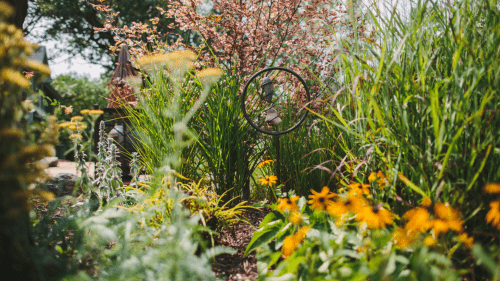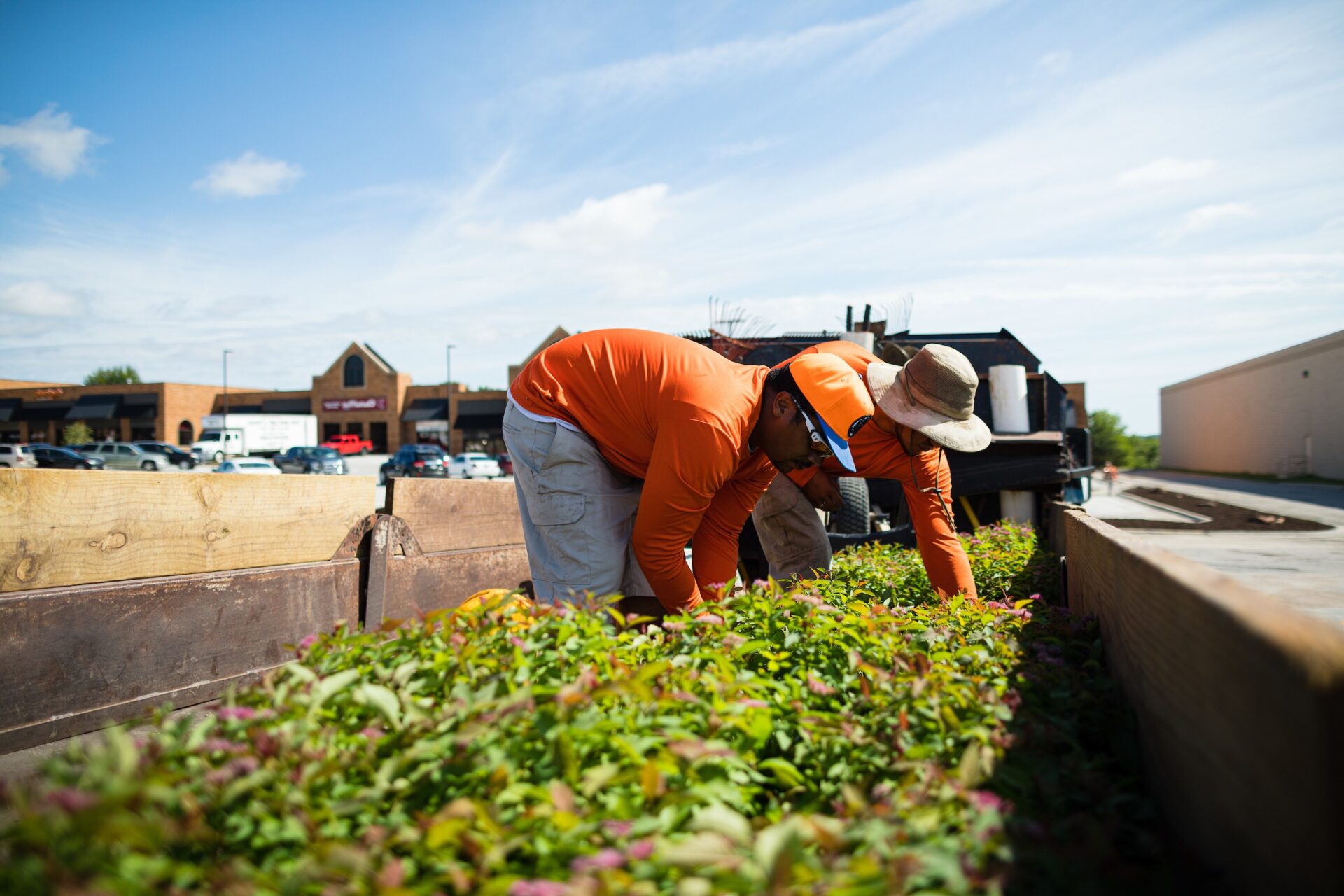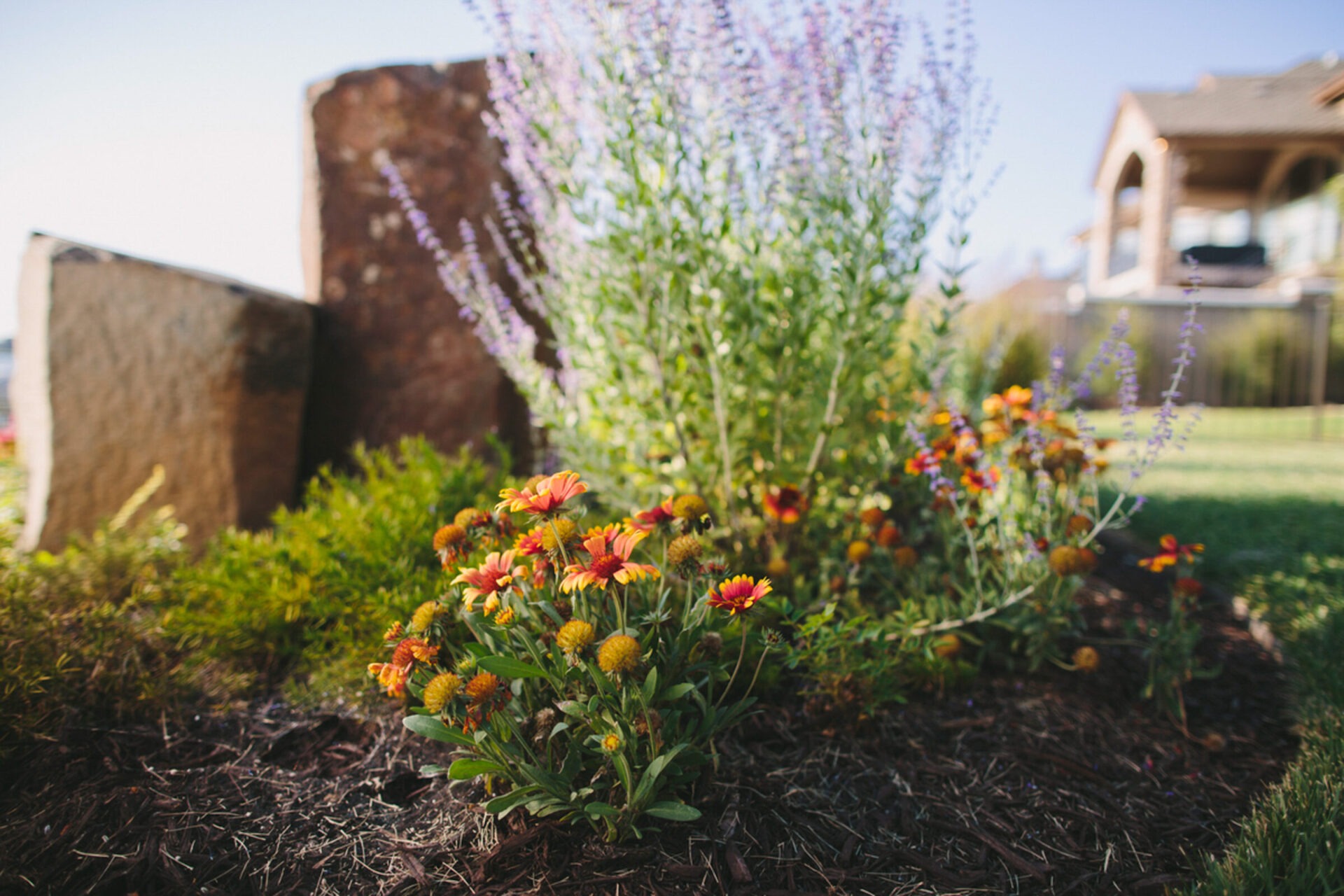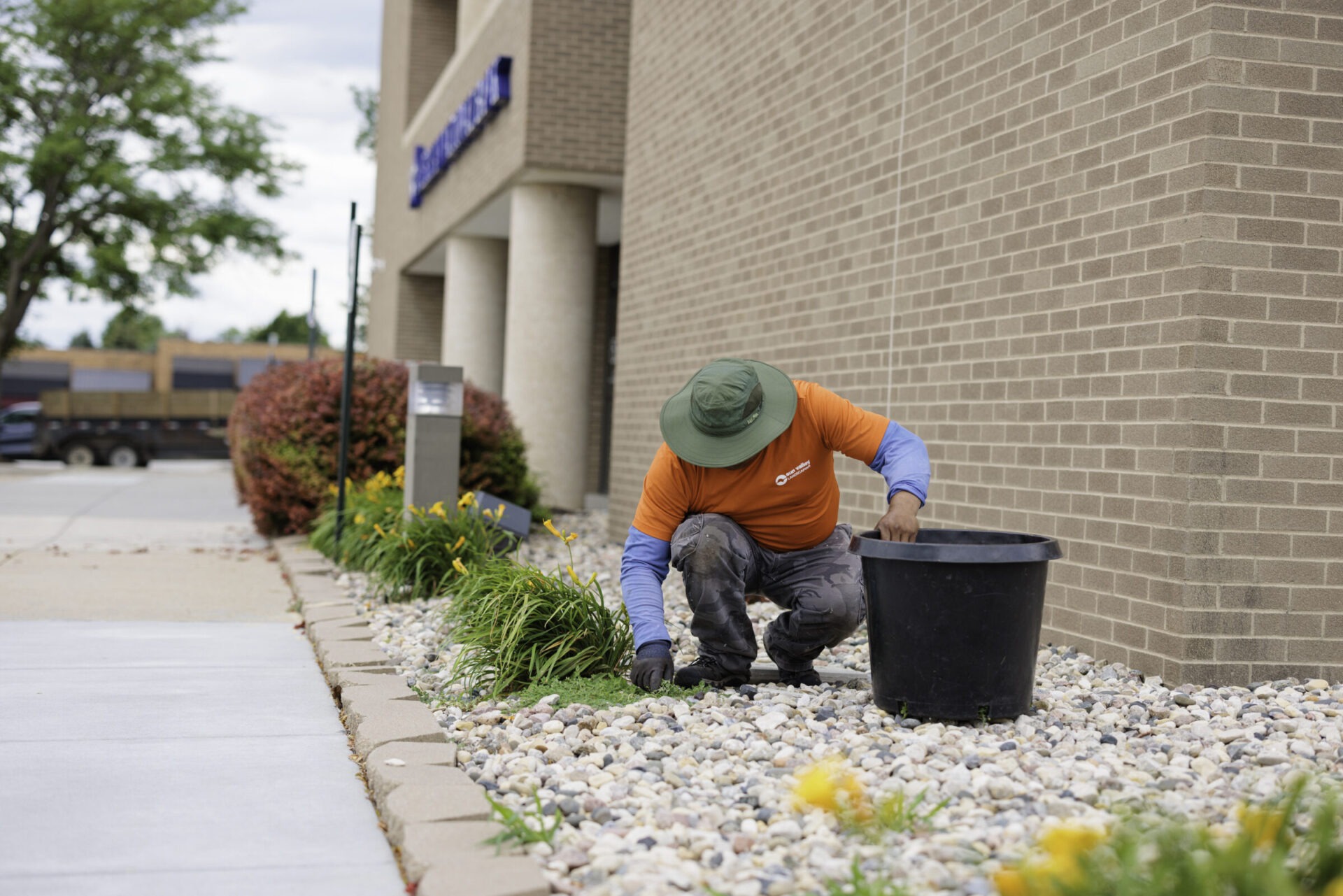Using Native Plants in Omaha

Landscaping in Omaha comes with unique challenges – from hot summers and cold winters to periods of drought. One smart solution for resilient and beautiful yards is using native plants in Omaha gardens. Native plants are species naturally adapted to Nebraska’s climate and soil, which means they can thrive with less fuss than many exotic ornamentals. In this blog outline, we’ll explore the benefits of native plant landscaping, highlight popular native plants in the Omaha area, and offer tips on landscape design in Omaha that make the most of these hardy, eco-friendly plants. The goal is to inform and inspire homeowners, commercial property managers, and eco-conscious readers about creating sustainable landscapes that look great year-round.
Why Choose Native Plants for Landscaping in Omaha?

Low Maintenance, High Reward
In the unique climate of Omaha, with its fluctuating weather patterns and occasional extremes, native plants have undergone a remarkable process of natural selection over countless generations. This evolutionary journey has equipped them with a remarkable resilience, allowing them to not only survive but thrive in the local environment. This inherent hardiness translates to several significant advantages for those who choose to incorporate native flora into their landscapes.
One of the most notable benefits is the dramatic reduction in water consumption. Accustomed to the region’s natural rainfall patterns, native plants require significantly less supplemental watering compared to non-native species. This not only conserves precious water resources but also translates to lower water bills for property owners.
Furthermore, native plants have evolved in the absence of synthetic fertilizers. Their deep root systems allow them to efficiently extract nutrients from the soil, making artificial fertilization largely unnecessary. This not only saves money but also reduces the risk of nutrient runoff, which can pollute local waterways.
Perhaps most importantly, native plants have developed natural defenses against local pests and diseases. This means that you can minimize how much you use chemical pesticides or even eliminate them. This is not only beneficial for the environment but also creates a healthier, safer outdoor space for families and pets.
The combined effect of these adaptations is that once native plants are established, they become remarkably self-sufficient. They require minimal ongoing maintenance, allowing busy homeowners and commercial property managers to enjoy beautiful landscapes without the constant burden of upkeep. This makes native plants a practical and sustainable choice for anyone looking to create a vibrant and low-maintenance outdoor environment in Omaha.
Supporting Local Ecosystems
By selecting native plants, you directly contribute to the health of Omaha’s natural environment. Native flora provides essential habitats and food sources for local wildlife, including pollinators like bees and butterflies. This biodiversity enriches your garden, transforming it into a lively, thriving ecosystem.
Preventing Soil Erosion
Native plants, especially grasses and deep-rooted perennials, stabilize soil effectively. Their extensive root systems hold soil in place, reducing erosion and improving water infiltration. This makes native plant landscaping particularly beneficial for sloped properties or areas prone to runoff.
Year-Round Aesthetic Appeal
Native plants offer diverse colors and textures throughout the year. From vibrant spring blooms to rich autumn foliage and even structural winter interest, your landscape stays engaging and attractive through all seasons, reflecting Omaha’s natural beauty.
Popular Native Plants in Omaha Gardens

When considering native plants for your Omaha landscape, here are a few standout species known for their beauty, resilience, and ecological benefits:
Purple Coneflower (Echinacea purpurea)
A classic prairie wildflower, purple coneflower thrives in sunny, well-drained areas. Its vibrant blooms attract butterflies, bees, and birds, providing ongoing visual and ecological interest.
Butterfly Milkweed (Asclepias tuberosa)
This striking plant bursts with brilliant orange blooms in summer. Butterfly milkweed is essential for monarch butterflies, providing nectar and serving as a host plant for caterpillars.
Goldenrod (Solidago spp.)
Goldenrod blooms in late summer and early autumn with golden-yellow flowers, supporting countless pollinators when other plants have finished flowering. It’s hardy, drought-tolerant, and misunderstood—often mistaken for allergy-inducing ragweed.
Little Bluestem (Schizachyrium scoparium)
An ornamental native grass with blue-green foliage that turns coppery-orange in fall, little bluestem thrives in dry, sunny locations. Its graceful form adds movement and texture to gardens.
Blazing Star (Liatris spicata)
Known for tall spikes of purple blooms, blazing star attracts pollinators and adds striking vertical accents to garden designs. Its nectar-rich flowers are particularly popular among butterflies.
Aromatic Aster (Symphyotrichum oblongifolium)
Blooming in fall, aromatic aster features lavender flowers, providing critical late-season nectar. It’s compact and tough, perfect for borders or rock gardens.
Integrating Native Plants into Your Omaha Landscape Design

Thoughtful landscape design with native plants can significantly enhance your property. Here are practical tips to seamlessly integrate natives into your Omaha landscaping:
Consider Site Conditions First
Matching plants to the conditions of your yard—sun, shade, moisture levels, and soil quality—ensures their success. Prairie plants like coneflowers and little bluestem prefer sunny, dry spots, while woodland species thrive in shady, moist areas.
Create Layered Designs for Visual Interest
To achieve a natural yet structured appearance, design your landscape with layers. Combine groundcover plants, medium-height perennials, and taller shrubs or grasses. This layering provides seasonal interest and mimics the diversity of natural ecosystems.
Group and Mass for Impact
In landscape design (especially with native flora), planting in groups or masses often yields the best visual impact. Instead of one coneflower, plant 3–5 together; instead of a single little bluestem, create a swaying cluster. Masses of native plants not only look more natural and striking, but also provide better habitat for wildlife. Repeating certain plants or colors throughout the garden can help tie the design together and guide the eye through the space, preventing a “wild” garden from looking random.
Blend with Hardscape and Lawn
Integrate native plant areas with your overall landscape by using hardscape elements and clean edges. A native prairie patch can be bordered by a neat mowed lawn path or a stone border to signal intention. Consider adding a flagstone path, a bench, or a birdbath within your native garden area to invite exploration and give a manicured touch. Hardscaping (like patios, walkways, boulders, or mulch paths) can provide structure around exuberant plantings, achieving a balance between a natural look and an organized design. This is especially useful in commercial settings or front yards where a tidy appearance is desired alongside the wild beauty of native plants.
Showcase Focal Points
Use native plants as focal points or accents in your design. For instance, a cluster of tall blazing stars might draw the eye at the back of a border, or a flowering native shrub like buttonbush could anchor a rain garden. Mixing in a few evergreens (some junipers are native) or year-round structural plants can ensure there’s always a focal point even when perennials die back in winter. Landscape design in Omaha can be both creative and sustainable – don’t be afraid to experiment with native plant textures and colors to achieve the look you want. The result can be a unique garden that reflects Nebraska’s natural heritage and your personal style.
Establishing and Caring for Native Plant Landscapes

Native plant landscapes are indeed low-maintenance, but proper establishment ensures long-term success:
Soil Prep and Planting
Before planting, remove any invasive weeds or turf grass from the area to reduce competition. You typically won’t need heavy fertilizers (native plants generally prefer poorer soils over rich, amended soil). Loosening the soil and adding a bit of compost can help new plants take root, but in many cases, native species will adjust to the native soil just fine. Plant in spring or fall for the best results, and follow recommended spacing so plants have room to fill in. Consider using a layer of natural mulch between young plants to conserve moisture and limit weeds while the natives establish.
Watering and Weeding (Early Stages)
Newly planted natives do need regular watering until their deep roots develop. For the first growing season, water deeply but infrequently to encourage roots to grow downward. Once they are established, most native plants require significantly less, and sometimes no, additional watering unless there is an exceptional drought. Keep an eye on weeds in the early stages – since you’re not using herbicides, occasional weeding is important until the native plants become dense enough to crowd out weeds. Established native plants typically flourish with little maintenance because they’re naturally suited to Omaha.
Low-Input Care
Unlike exotic ornamental plants or high-maintenance lawns, native plant gardens typically don’t require chemical fertilizers or pesticides to look great. Once your native landscape is mature, you can dial back irrigation and skip the fertilizer – the plants are adapted to the local soil nutrients. Pest problems are often managed naturally: a healthy native garden attracts beneficial insects that prey on pests, reducing the need for insecticides. You may even notice fewer issues like Japanese beetles, since certain native wasps and birds will help keep such pests in check. Naturally controlling pest issues is frequently achievable. A thriving native garden attracts useful insects that feed on pests, decreasing reliance on chemical insecticides. Observe a decline in problems like Japanese beetles, as specific native wasps and birds will naturally control their populations. Overall, you’ll spend less time and money on watering and chemicals, which is a win for you and the environment.
Seasonal Maintenance
Light seasonal maintenance keeps your garden tidy and healthy. Cutting back dried foliage in late winter or early spring encourages robust new growth. Allowing plant material to stand through winter supports local wildlife, providing shelter and food during colder months.
Managing Growth Over Time
Native landscapes evolve naturally, with plants occasionally spreading or self-seeding. Manage this growth by periodically dividing or relocating plants to maintain your preferred design structure.
Embracing Native Plants in Omaha

Choosing native plants for landscaping in Omaha goes beyond aesthetics—it’s a meaningful contribution to local ecology and sustainability. This decision transforms ordinary spaces into vibrant ecosystems, supporting local wildlife, conserving resources, and enhancing the beauty of our region.
Native plant gardens remind us of Nebraska’s natural heritage, connecting landscapes to their geographical and ecological roots. They encourage us to appreciate our environment, actively participate in conservation, and inspire community-wide adoption of sustainable gardening practices.
Professional Help with Native Plant Landscaping in Omaha
Feeling inspired but unsure how to begin incorporating native plants into your Omaha landscape design? Local professionals specializing in native landscaping can guide you through the process, helping you select the ideal plants and layout tailored specifically for your space and needs. Investing in professional guidance ensures your native landscape thrives beautifully and sustainably for years to come.
By integrating native plants into your landscaping in Omaha, you’re investing in a future where gardens and landscapes contribute positively to our community’s ecological health and natural beauty.
Contact us to get started on your next project and create something sustainable and astounding.
Tags:

